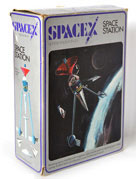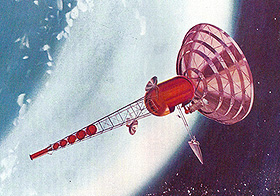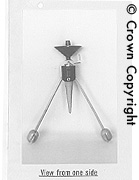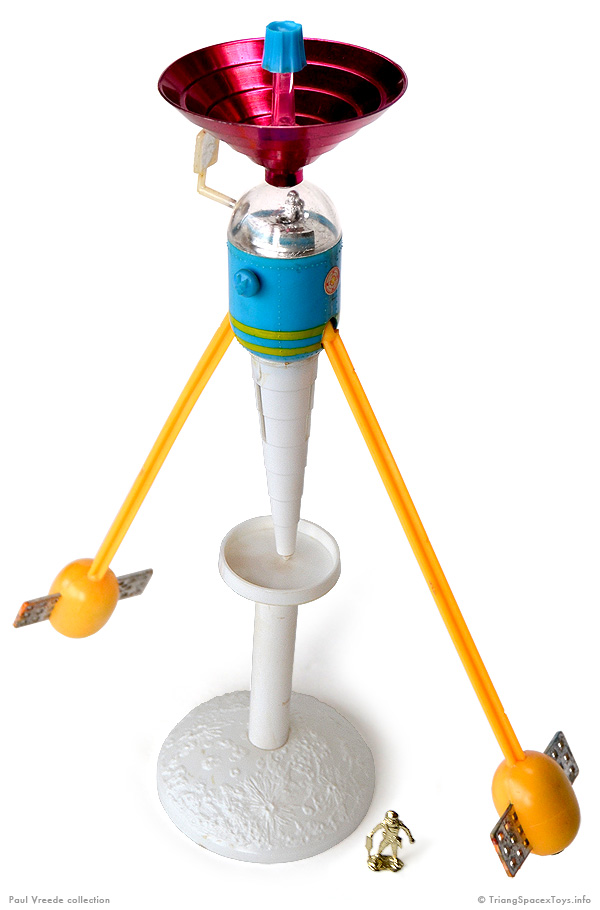
Note: the example above is sadly missing a small antenna and one small and two larger shuttle-type spacecraft, as shown in the box illustrations below.
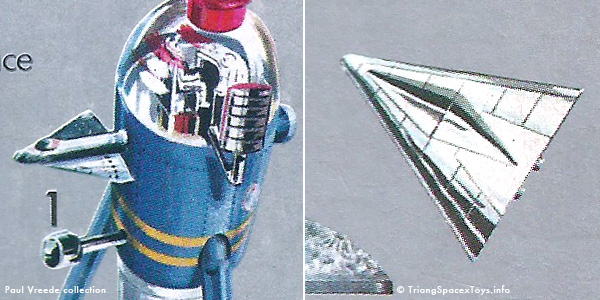
Size
Total height
Station:
Body height
Dish diameter
Antenna length
Base:
Height
Diameter
320 mm
208 mm
79 mm
242 mm
120 mm
89 mm
12 5/8 in
8 1/4 in
3 1/8 in
9 1/8 in
4 3/4 in
3 1/2 in
Features
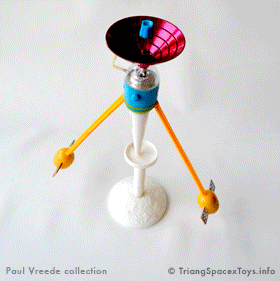
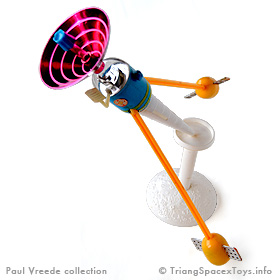
The pods at the end of the yellow antennas contain metal blocks, that bring down the centre of gravity and keep the station upright on its base or at an angle (right). Giving it a gentle twirl will keep the station revolving around its axis. If twirled too brusquely, a weight will touch the table and the station will do a disastrous somersault as a result...
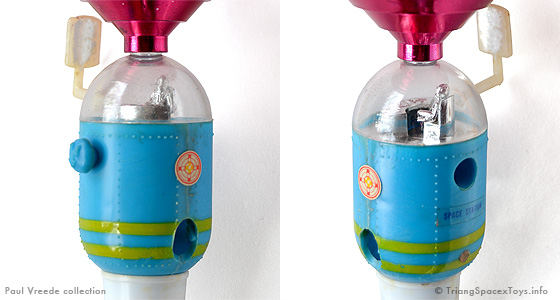
Pressing a button with arrow moulded on will launch the (missing) little shuttle from the other end. The holes lower down are where the antennas fit in (note locking guides).
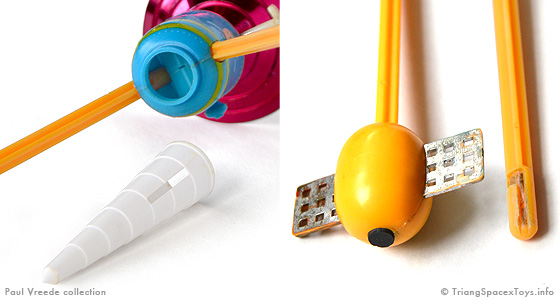
The white tail cone can be removed, which is extremely handy for correctly fitting the antennas. These are pushed in and then twisted to lock - though I've had to slightly sand down rough edges and add graphite powder for fear of breaking them while doing so. Why the tail cone has three slots I have no idea. Thoughtful detail: the antennas have a little rubber tip at the end to avoid scratching a table surface.
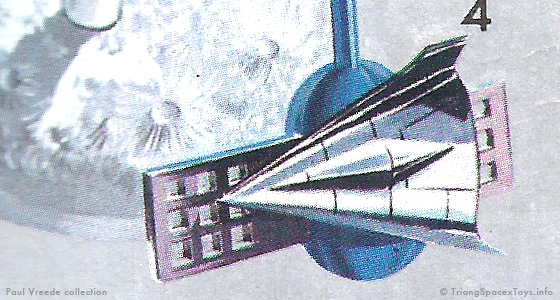
The two (missing) larger shuttles each have a magnet inside, which holds them to the metal blocks inside the antennas.
Markings
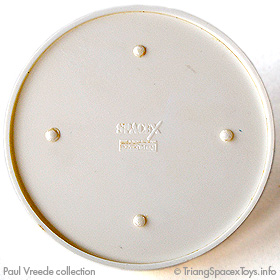
The underside of the base carries a Spacex trademark.
The Station itself has no markings, other than a "Space Station" sticker.
No variations known.
Prototypes & Mockups
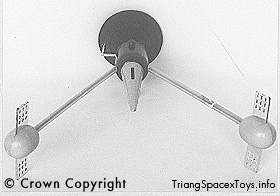
The Representations photographs for the design registration (linked below) show what looks like a production toy, but the main body is in a much darker colour while the tail cone appears not to be white but possibly yellow since it has the same shade as the antennas. The antenna ends also lack rubber tips.
A Boeing concept illustration by Robert Fetterly, found in The Encyclopedia of Space, published 1968. The solar panels on the antenna booms may have been inspired by another Boeing concept.
UK Registered Design
945482
29 April 1970
Toy Space Station
